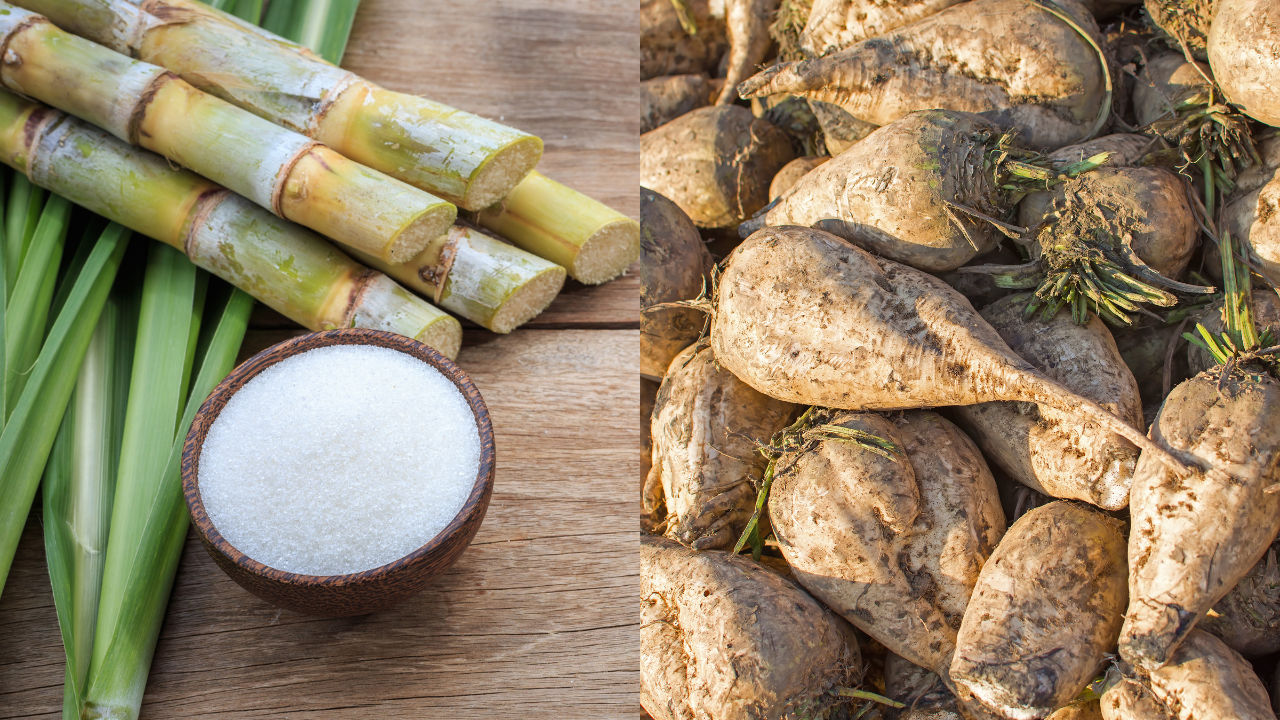In discussions of beet sugar vs cane sugar, the source of the sugar plays a key role in its characteristics.
In discussions of beet sugar vs cane sugar, the source of the sugar plays a key role in its characteristics.
Blog Article
Discover the Uses and Benefits of Beet Sugar Vs Cane Sugar in Your Daily Diet
Exploring the unique qualities of beet and cane sugar reveals more than simply their sweetening abilities; it highlights their one-of-a-kind effect on health and cookeries. Beet sugar, known for its subtle flavor, is often favored in delicate treats, whereas cane sugar, with its tip of molasses, adds richness to robust meals. Each kind holds its own nutritional profile and glycemic implications, inviting a deeper understanding of their functions in a balanced diet regimen and sustainable usage methods.
Beginning and Production Processes of Beet and Cane Sugar

The unique environments and soil kinds needed for expanding sugar beetroots and sugarcane add to differences in their cultivation practices and geographic distribution, influencing the economics and sustainability of their manufacturing. beet sugar vs cane sugar.
Nutritional Contrast In Between Beet Sugar and Cane Sugar
Despite originating from various plants, beet sugar and cane sugar are nutritionally extremely similar, both primarily containing sucrose. Each offers regarding 4 calories per gram, converting to about 16 calories per teaspoon. Structurally, both sugars are composed of around 99.95% sucrose, with minimal amounts of other substances like moisture and trace minerals, which do not substantially change their nutritional accounts.

Inevitably, when selecting in between beet sugar and cane sugar based on dietary web content alone, both offer the same benefits and drawbacks as they are basically kinds of the exact same particle-- sucrose, providing quick power without various other nutrients.
Effect On Health And Wellness: Glycemic Index and Caloric Material
Discovering further right into the results of beet sugar and cane sugar on wellness, it is vital to consider their glycemic index and calorie web content. The glycemic index (GI) of both beet and cane sugar is around 65, classifying them as high-GI Bonuses foods, which can create fast spikes in blood sugar degrees.
Each type of sugar consists of around 4 calories per gram, making their calorie web content matching. For those keeping an eye on caloric intake, particularly when managing weight or metabolic health problems, recognizing this equivalence is essential (beet sugar vs cane sugar). Extreme intake of any type of high-calorie, high-GI food can add to wellness concerns such as obesity, heart disease, and insulin resistance.
Environmental and Economic Factors To Consider of Sugar Manufacturing
Beyond wellness effects, the production of beet and cane sugar additionally increases significant ecological and financial worries. Sugar beet growing often tends to call for cooler climates and has a reduced geographical footprint contrasted to sugar cane, which flourishes in exotic areas. Both plants are intensive in terms of water usage and land line of work, potentially leading to deforestation and water deficiency. Financially, the worldwide sugar market is extremely Get More Info unpredictable, influenced by modifications in global profession policies and subsidies. Lots of nations incentivize sugar manufacturing through financial backing, skewing market rates and affecting small-scale farmers adversely.
Furthermore, making use of chemicals and plant foods in both beet and cane sugar cultivation can lead to soil degradation and pollution, additional affecting biodiversity and regional water bodies (beet sugar vs cane sugar). The option in between cultivating sugar beet or cane usually rests on neighborhood ecological problems and financial factors, making the sustainability of sugar production a complex issue
Culinary Applications and Flavor Differences
While the environmental and financial elements of sugar production are certainly considerable, the choice in between beet and cane sugar also affects culinary applications and taste accounts. Beet sugar, derived from the sugar beet plant, is known for its extremely neutral preference.
Walking cane sugar, removed from sugarcane, typically retains molasses traces, which pass on an unique splendor and deepness. The minor variation in dampness web content in between beet and cane sugar can influence the structure and uniformity of dishes, making cane check over here sugar a recommended selection for certain recipes that benefit from its unique homes.

Conclusion
Finally, both beet and cane sugar have distinctive origins and production processes, providing comparable dietary accounts with slight differences in salt material and taste. While their effect on wellness, specifically regarding glycemic index and calories, is equivalent, the selection in between them typically comes down to ecological, financial variables, and details culinary requirements. Understanding these facets can assist customers in making notified decisions that line up with their health and wellness goals and taste preferences.
Report this page